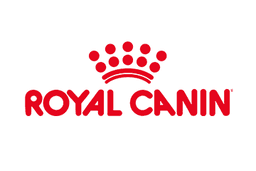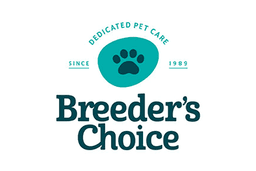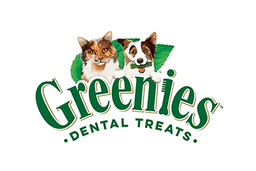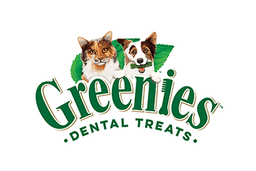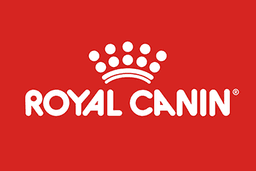Are you prepared? What to include in your pet first aid kit
Has your dog’s trot turned into a totter? Or have you heard your cat wailing “me-OUCH”?
Sounds like they might be injured – or feeling a little worse for wear.
And as a pet parent, it’s bark-ing stressful! Especially without the proper pet bandages, gels and feel-good remedies to fetch for them.
So to help you stock up on the essentials, we’ve put together the ulti-mutt first aid kit – ready for (almost) any pet predicament.
But remember: if it’s critical, get your pet to the vet!
First, think about storage
If you have five hands and can carry the entire contents of your first aid kit, cats off to you.
But for the rest of us, you will need a bag, bin, or container to store your supplies.
First aid kits are usually for emergencies. So you’ll want to grab it and go – easily. Or take it along with you on your pet escapades.
Tuck in a torch
Yeah, we know. Your injured pet is nothing to make light of.
But when you’re in the dark needing to pull out a stubborn splinter, find the tweezers you dropped or even scare away wildlife, you’ll need the glow of a torch.
Remember though: a torch without batteries is like a dog without grub – bound to run out of juice. So make sure your kit is stashed with enough batteries to keep the light shining all night long.
Make room for a muzzle
Let’s play a game of over-rated and over-hated, shall we?
Over-rated? Expecting your pet to behave when they’re distressed. Over-hated? Muzzles.
When your pet is in pain or distress, muzzles can protect them from hurting themselves, you and anyone treating them.
However, avoid leaving it on for long periods. And if your pet is throwing up or has a head injury, boycott the muzzle altogether.
Add a spare collar and leash set
“Where’s the leash? I swear I left it at the door.”
Sound familiar? Whether their collar’s been left at the dog wash, or their leash has tagged along with your partner on a weekend getaway, these small but vital items are easy to misplace.
So to prevent a furry-friend-turned-fugitive, keep a spare collar and leash in your first aid kit!
Bear in mind a blanket
When you felt unwell as a kid, what made you feel better? Was it being wrapped in your favourite blanket? It’s an instant feel-good remedy, at least for a moment.
So what does your first aid kit need? A blanket. As you care for your pet’s injury or bout of sickness, at least they’ll feel calm and comfy!
Find space for a tick remover
While they’re rustling around in the bushes, your pet may attract some uninvited guests… a tick or two.
So having a tick remover in your first aid kit is a must. This spoon-like device will whip off the tick – before it causes havoc for your little animal.
Throw in some tweezers
If your fingers can’t type on a little phone screen without making a few typos, they may not be nimble enough to remove prickles from your pet’s backside.
It’s a sad reality to come to terms with, we know.
Grass seeds, splinters, thorns and needles – those suckers are small. That’s why tweezers come in handy. They can grip these tiny things tightly enough to take them out – before they dig in further.
Don’t forget the salt
You need to perfect your first aid kits like you perfect your spag bol – with salt.
Why? Because by adding a couple of teaspoons of salt to a small amount of water, you’ve got yourself a makeshift antiseptic – perfect for cleaning and flushing pet wounds on the go. An alternative is some sterile water.
Salt can also be helpful to induce vomiting if your pet has swallowed something they shouldn't have but this must only be done after direct instruction from your vet
You should never induce vomiting in your pet if it has eaten anything acidic, like washing detergents, powders, cleaning agents, bleaches, and car coolant. When it comes back up, it will burn their throat and further injure them.
Whack in some wound gel
With medical-grade manuka wound gel on the market, Pooh Bear isn’t our only furry friend who loves honey.
This miracle gel protects wounds, maintains a natural pH balance, reduces and prevents contamination and controls odours. What an overachiever!
So with this gel on hand, your pet will find relief faster than you can say “manuka!”
Tip: You can also use an antibacterial spray in place of the wound gel
Grab the gauze
Ever heard the phrase, “wrapped up in cotton wool”?
Well, if your pet has an open wound, that’s exactly what you should do: wrap them in gauze and cotton wool.
The material makes a versatile wound dressing because it controls bleeding, acts as a temporary brace – and can even form a makeshift muzzle if needed.
Got some old puppy toileting mats laying around? These can be used as well, along with sanitary or incontinence pads and tampons.
Bundle in some cohesive bandages
Sometimes simply wrapping a wound in cotton wool is not enough – especially if it’s showing signs of swelling. You’ll need a bandage that’s tight.
answer? A cohesive bandage.
This will hold in place without slipping – while also compressing any swelling. No need for tape or pins!
Keep a travel water bowl handy
For an emergency or not, it’s a good idea to have a travel water bowl in your kit.
You never know when an opportunity for a lengthy trot will present itself. If it does, you’ll need an easy-to-carry water bowl – to make sure your pooch stays quenched, not paw-ched.
List out those important contacts
We're not all going to have our vet on speed dial and what if your phone isn't handy?
Make sure you've got a hard copy of important numbers, such as your local vet and nearby emergency animal clinics.
Medical records such as a copy of vaccinations, medical history, and insurance documents shouldn't be overlooked either. Knowing your pet's medical history can help the vet to provide even better care.
What to Include in Your Pet First Aid Kit: A Quick Summary
Here's a quick summary of the above you can screenshot and save for later:
- Storage container
- Torch
- Muzzle
- Spare collar and leash
- Blanket
- Tick Remover
- Tweezers
- Gloves
- Salt or sterile water
- Wound gel
- Gauze and cotton wool
- Cohesive bandage and absorbent items
- Travel water and food bowl
- Vet contact number and records
Let us aid your questions
What’s a normal body temperature for my pet?
For both cats and dogs, it can be anywhere between 37.5 and 39 degrees Celsius. Anything over that, seek vet attention.
What’s an average pet heart rate?
If your pet’s heart rate is outside these normal ranges, head to the vet:
- Puppy (<1 year old): 120–160 beats per minute (bpm)
- Small breed dog: 100–140bpm
- Medium to large breed dog: 60–100bpm
- Cats: 160–220bpm
Have a different type of animal friend? Ask your vet for their healthy heart rate range.
How do I know if my pet is dehydrated?
Pull on the skin between your pet’s shoulder blades to check their hydration levels.
If the skin springs back into place, they’re fine. If it stays tented, they’re dehydrated. Monitor it over time. And if it doesn’t improve, take them to the vet.
Is there an animal emergency service?
There most certainly is – and more than just one! Check out RSPCA Victoria for all your emergency assistance need-to-knows (if you live in Victoria). But if you don’t, don’t worry! There’s an RSPCA website for every state.
Is there a pet first aid course I can take?
Yes! Check out the Australian Red Cross pet first aid course to become the best inhouse dog-tor for your pet.
Want to keep your pet’s tail wagging? Check out the PetPost blog for all our pet-care tips.


